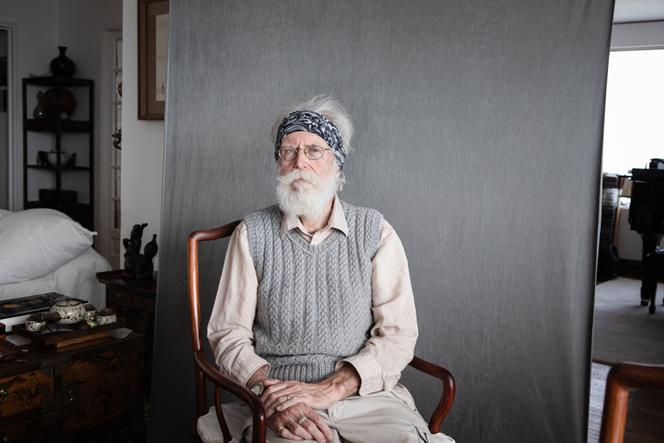


The award of the Abel Prize to French mathematician Michel Talagrand came as something of a surprise on Wednesday, March 20. Not because the name of this mathematical superstar of probability had not earned its place among his famous predecessors, but because his appearance astonished even his colleagues. He sported a bandana with blue patterns on the forehead giving him, according to commentators, the air of a hippie, a biker or an Indian. "I don't attach any importance to my outfit. It's actually unintentional," apologized the 72-year-old French National Center for Scientific Research (CNRS) former director. As he explained, his wife found this colorful headband so he wouldn't lose his hearing aid! And his unusually long white beard could be explained by an electric razor whose battery gave up the ghost.
The anecdote fits well with this researcher, who described his career as "like a Brownian movement. A succession of decisive shocks." The metaphor is perfect, as the academician is a specialist in probability, in other words, the study of random phenomena. Brownian movements are examples of random trajectories, like the erratic ups and downs of a stock market price, the diffusion of particles in water, or the oscillations of a drunk between several street lamps.
Talagrand received his first shock at the age of 5. He lost his right eye due to a detached retina caused by a genetic disease. By the age of 15, his parents were worried about his left eye. His high school education was interrupted. His father, a math teacher at a preparatory school, gave him lessons while he was blindfolded because of the operation. "I mentalized maths," recalled the future researcher, who, although he loved the subject and physics, was not the best in his class. But by the time he returned to class a few months later, he would be.
Another "chance" happened in 1974, while still at the University of Lyon and yet to begin his thesis, he joined the CNRS, in an exceptional year when 17 mathematicians were accepted. He joined the famous analysis laboratory of Gustave Choquet (1915-2006), at the Université de Jussieu, Paris, before suffering another positive disruption: his meeting with Gilles Pisier, his contemporary. This professor from a neighboring laboratory sensed that his colleague's technical agility and knowledge, which had already earned him a CNRS bronze medal in 1978, could help him shed light on enduring probability problems. This would be the case, on June 6 ,1985, to be precise, when Talagrand solved one of them (published in 1987): "It's not the technical obstacles that block. It's when you look at the problem from the wrong point of view," he observed. And it was precisely in the random process he was interested in that he saw a geometrical structure that no one else had spotted.
You have 67.55% of this article left to read. The rest is for subscribers only.
